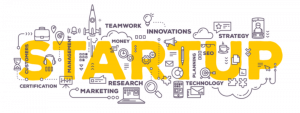Employers are struggling to hire amidst one of the most candidate-driven markets Australia has ever seen.
Ellis Taylor, Head of Partnerships at Real Time, shows us how the companies who are winning this struggle are doing it.
Before we get started, I think HBR’s Peter Cappelli can set the scene for us all:“Businesses have never done as much hiring as they do today. They’ve never spent as much money doing it. And they’ve never done a worse job of it.”That quote was from 2019 – and we all know things have only gotten harder since then.
Salaries are rising at extraordinary levels, the supply of talent is unprecedentedly low and the pressure on scaleups to hire amidst a gold rush of capital investment is dizzying.
The companies who are winning this ‘talent war’ have a common dedication to structure, proactivity and simplicity – here’s what hiring looks like at the Seed & Series A stages of those startups, scaleups & future tech giants.
Hiring after your Seed raise
You need to make a few key hires that will get you to the next level. But the success of these hires will dictate whether you can achieve that level.
Your hiring position is in a state of chaos, because:
You need to attract people to your brand but you have no visible brand.
If you attract candidates to your brand you need to know how to assess them but you have no hiring structure.
You are competing in an unprecedentedly competitive market, where salaries are shooting through the roof and “active” candidates have on average 2.7* offers in their hand. However you might have little money & your equity proposition is a bit of a punt, really.
So, what do you do?
1. Before you even think of hiring you need to develop, burn, then redevelop (& repeat) a clear Roadmap that details where you’re going, why you’re going there & how you’re going to do it. Read about the Lean Canvas Method here.2. Your Organisational Design then shows you who, why & when to hire.
The only reason you should ever hire is to mitigate a threat or fulfil an opportunity within your Org design.
It is how you are structured to achieve the goals in your Roadmap.
3. Once you can see where to hire, obsess over a Job Design for that gap.The #1 most misunderstood step in hiring.It clarifies the purpose, outcomes & requirements of this exact role.
It really does everything for you: writes your Job Description, cements the roles’ KPIs and forms your interview scorecard.
4. Answer in unwavering detail & confidence;“Why would someone want to take this position, with us, right now?” This is a part of your EVP (Employee Value Proposition) though much more specific as it speaks to the individual role.
5. Have the offer packaged and ready so that you are just dropping their name in immediately after the final interview… Ask any hiring manager or recruiter at the moment, those who wait, lose.
VCs & Advisors often stipulate that ‘with this capital you must hire a ___’ which makes complete sense, so work with them on the above guide so that both parties are clear on who you need. Once you’ve onboarded a few team members, remember to continuously work towards building and perfecting your A-team – read some tips here.
Hiring after your Series A
After you have secured Series-A funding, you need to plan for 2 types of hiring functions,
1: Specialisation, and
2: Volume
Both functions are likely in a state of Inconsistency – that is you might have some wins, though they are often driven by individual hiring managers abilities versus Systemic, team driven processes. Some things to consider:
Specialisation
These are the hires, similar to those within Seed hiring, though are more targeted to perform a function of getting your business to the next, definable level.
“We need a Solution Architect to solve X”
“We need a GM of Engineering to instil Y”
Specialists are not generalists. Employers often waste a lot of time trying to hire people to solve “X, Y & Z”, which may be over a 4-year plan and/or are too much for 1 person to handle.How to hire Specialists Building upon your new addiction to steps 1-5 in Seed Hiring:If you can attract the right candidates through your network – fantastic! Though you need a program to follow, which diligently assesses them the same as any other candidate. You cannot solely rely on this channel, and you need to be very conscious of nepotism & bias here.
Consider contracting. This option continues to grow in favour of both candidates & employers. Based on your Job Design (step 3 above) you might see that you don’t need a “Senior, Full Stack Dev to own Front & Back End” though perhaps a specialist FE Dev who can build your UI in 3 months?
Find a specialist recruiter who can immediately introduce you to that candidate market (ask your network, VC, Advisors & your team to give you names of those who have proven themselves).
Remember specialist candidates are rare & in demand, so you need to answer “how is our interview process and experience better than the multiple others they are having?”
Volume
The roles that you need to maintain organisational capability, need many of, and need a pipeline for the foreseeable future (think eventual replacements, promotions, growth, attrition etc.).Your 5 x Customer Success team, or your 3 x Product Managers for example.How to hire Volume Create an internal referral program where you pay your staff a ‘finders bonus’ ($2k – $5k is common) for successfully referred placements. Just like considering hiring through your network above, all candidates must be screened & tested the exact same way – otherwise you’re creating a linear culture which always unfolds.
Set up a scalable, internal function – via an Internal Talent hire (on a contract, not a Full Time Employee unless you’re hiring more than 40 people per year).
Note: this is one of the most in-demand roles in Australia right now – finding good internal recruiters is challenging.
Test 2-3 “function specific” recruiters (Tech / Marketing / Sales etc.) and settle on 1-2, which you review every 6-9 months. They should deliver when you need, and know your needs well enough to build a pipeline for you.
Please remember, you are hiring amidst one of the most candidate-driven markets Australia has ever seen. We have unfortunately witnessed companies fall apart in the past 12-18 months because they haven’t adapted to this realisation.
Treat candidates like gold (word travels fast and lingers, when you don’t).
Happy hiring!
Real Time is an expert Tech Resource & Recruitment firm that has partnered with the leaders in Tech for over 30 years. Get in touch with Ellis via email at ellis.taylor@realtimeaustralia.com
Was this article helpful?
Related Posts
- Preference Shares
Preference Shares are a separate class of share and have features which can be used…
- Raising Capital: 7 Key Questions You Need to Ask
Raising capital is not an easy task and is often very time-consuming, but the need…
- Financing New Employees: Can I Afford to Hire?
Your workforce is your most valuable asset as a business owner. When is the right…
- Export Marketing Plan
Looking to export overseas & bolster your eligibility for the EMDG? Look into developing an…














